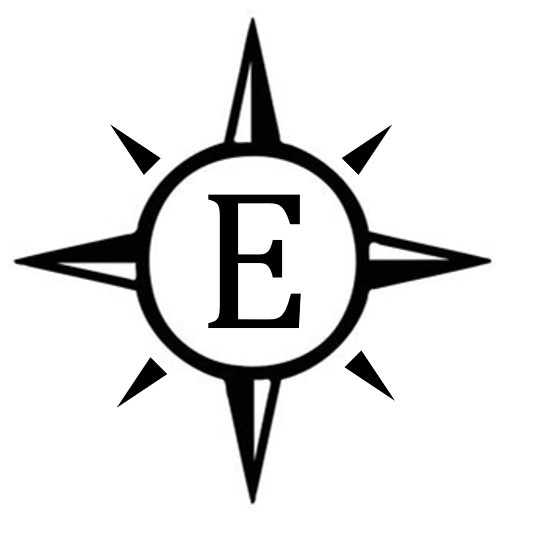|
 EXPLORE & OBSERVE EXPLORE & OBSERVE
|
| |
|
Edition #45: Treasure hunters |
| |
|
Plus a month under the Mediterranean Sea, another month in the wilds of Alaska, and a planet party on Venus. |
| |
|
Apologies for the late newsletter this week. I had some technical difficulties over the weekend but we should be back to the normal Sunday morning cadence next time around.
-Evan |
| |
|
#01 CHAMONIX
+ "We were high, north-facing, and out of the sun. I waited in the cold until eventually Elías, crouched on his knees, began to pull out chunks of a dark glassy substance. A few smaller pieces came first, which he held together in his orange-and-gray-gloved hand like oversized, irregular marbles. The block that followed was much larger, the size of a small brick, its surfaces angled together into a sharp point, like a microcosm of the spiky mountains all around us. It was translucent. This was what we had come for." High in the French Alps, elite mountaineers are following a centuries-old tradition of hunting for rare crystals in the cracks of inaccessible mountainsides. This piece comes from Outside Magazine which I find consistently publishes some of the best long-form journalism on the internet. |
| |
|
#02 DEEP DIVES
+ A group of four French divers just came back to land after spending 28 days living in a habitat pressurized to 13 times normal atmospheric pressure. It wasn't all bad though. Every day the habitat was lowered 400 feet below the surface of the Mediterranean Sea, enabling the intrepid explorers to exit it safely and explore the seafloor without having to go through lengthy decompression cycles every day (which would otherwise be needed to keep nitrogen from forming bubbles in the bloodstream which can kill you).
+ Meet Nicole Yamase, the first citizen of the Federated States of Micronesia to travel to the deepest stop in the ocean, which is indeed located in the Federated States of Micronesia. |
| |
|
#03 ALASKA
+ "It wasn’t much to look at—just a short, self-cloning spruce on a nondescript hillside. But it raised big questions." A group of Ecologists travels 320 miles in 37 days on foot across the remote Alaskan wilderness in search of answers to a deceptively simple question: Where exactly are the trees headed to? |
| |
|
#04 PLANET PARTY
+ NASA announced that it will launch two spacecraft to Venus around 2030. Earth's sister planet has a hellishly hot surface of over 800F with an atmospheric pressure nearly 100 times that of our own. Scientists want to know how it got that way despite its similar size and location in the solar system to Earth. DAVINCI+ will drop a probe into the planet's atmosphere to make precise measurements of its composition and take high-resolution images of the surface. Meanwhile, Veritas will stay in orbit and make detailed maps of the surface and study Venus's geologic history. The spacecraft will be the first American vehicles to visit Venus since the early 1990s.
+ The European Space Agency, not to be left out of the party, decided to launch its own mission to Venus around the same time. EnVision will make a detailed study of regions called tesserae, raised continent-scale landmasses on the surface of Venus, from orbit. |
| |
|
#05 ELSEWHERE IN THE SOLAR SYSTEM
+ The Jupiter orbiting Juno spacecraft made a close pass by Ganymede and returned the highest resolution images of the moon in a generation. Ganymede is the largest moon in the solar system and is bigger than Mercury.
+ Perseverance is off on a summer road trip with a goal to cover 3 miles in the next 100 days. That may not sound like a lot, but is absolutely smokin' for a Mars rover. |
| |
|
#08 A GOOD BOOK
Kirsten H. our resident librarian here at Explore and Observe is back this week with a wonderful children's book recommendation.
+ How do you explain DNA to a child of say, eight years old? Tricky, you say? Too abstract? Perhaps even too scientific? In Grow: Secrets of our DNA, Nicola Davies starts with the basics: “All living things grow.” From there, she discusses adaptation to the natural environment and the fact that all living things change and grow over time. “From the time your body was a tiny dot,” she states, “your body has been following a set of instructions.” The set of instructions, of course, is DNA. She discusses genes and where one’s genetic code comes from, and how similar all human genetic codes are to other human genetic codes (very similar), to chimpanzees (still quite similar), and even to roses (not similar at all!). Emily Sutton’s illustrations complement the text wonderfully. I particularly appreciate that this book resists the white default: the main children in the book are Black which is very refreshing, and the example nose shapes and hair texture are representative of a wide swath of humanity. Together, Davies and Sutton manage to make DNA understandable to a young audience without oversimplification, a difficult task that they make look easy. Recommended for absolutely everyone. |
| |
|
That's all for this week! You can respond to this email to tell me about anything you liked or didn't like, tell me about a project you're working on, or suggest a story. You might also forward this email to a friend so they can subscribe too!
- Evan Hilgemann |
| |
|
This newsletter was produced as a private venture and not in the author's capacity as an employee of the Jet Propulsion Laboratory/California Institute of Technology or of Griffith Observatory. Any views and opinions expressed herein or on exploreandobserve.com are his own and not those of his employers. |
|
|
|